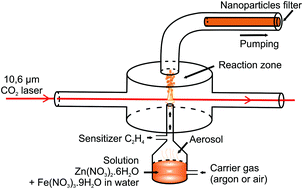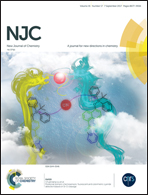Evaluation of electrochemical performances of ZnFe2O4/γ-Fe2O3 nanoparticles prepared by laser pyrolysis
Abstract
A ZnFe2O4/γ-Fe2O3 nanocomposite (theoretical specific capacity: 1002 mA h g−1) was successfully synthesized by laser pyrolysis, a very attractive nanosynthesis technique characterized by high versatility and flexibility. The obtained nanopowder was thoroughly characterized by XRD, XPS, Mössbauer spectroscopy and HRTEM, which confirmed the presence of two phases. A bimodal size distribution with small particles (tens of nanometers) and large ones (above 500 nm) was revealed by SEM and TEM. The ZnFe2O4/Fe2O3 nanocomposite was tested as a negative electrode material for lithium-ion batteries, showing significantly improved lithium storage properties with a high reversible capacity and rate capability compared to a pure ZnFe2O4 electrode. A capacity exceeding 1200 mA h g−1 is sustained after 100 cycles at 100 mA g−1, with a gradual increase of the capacity during cycling. At 500 mA g−1 current rate, a reversible and stable capacity of 360 mA h g−1 is observed after 300 cycles. Electrochemical measurements with several electrolytes and electrode formulations were also conducted in order to explore the origin of the extra capacity and its increase with cycling.



 Please wait while we load your content...
Please wait while we load your content...